Modern Magnificenza
How tech billionaires can restore our right-brain and make the world beautiful
Welcome to the 411 newly Not Boring people who have joined us since our last essay! Join 244,610 smart, curious folks by subscribing here:
Today’s Not Boring is brought to you by… Ramp
Ramp is more than a corporate card (although it makes a great one). The card is the portal into a full suite of products designed to help your business grow intelligently and help you save time. Imagine: never chasing down your team, or being chased, for receipts. Ever. Again.
With Ramp, your finance team has the best engineers in fintech, like Calvin, working on your behalf to make sure that you get the control and visibility they need, without the busywork.
Ramp is one of my favorite companies in the world. It’s the only company I’ve written about four times and invested in three times. The company just keeps getting better, which means your finance team does, too.
Ramp is so much better than the alternatives that I bet your team will eventually run on Ramp. Just start now, and start compounding the benefits of working with a company that makes your company run better. Reply to this email to let me know when you switch.
Upgrade your team to Ramp: The Official Business Card of Not Boring.
Hi friends 👋 ,
Happy Tuesday, and ciao from Italy, where the Not Boring team is getting ready to celebrate Dan and Sienna’s wedding!
Maybe it’s the love in the air, maybe it’s the architecture, maybe it’s the history, or maybe just the Lambrusco, but being here has renewed my belief that we must, and can, make the world more beautiful. That even as we use our left-brains to accelerate progress, we can use our right-brains to birth a new Renaissance.
And billionaires might just be our best shot.
Let’s get to it.
Modern Magnificenza
In The Master and His Emissary, Iain McGilchrist writes about the differences between the right and left hemispheres of our brain.
Our left-brain is narrow, analytic, grasping. Our right-brain is broad, contextual, alive.
We need both, but in a healthy person (or a healthy society), the right-brain is the Master, and the left-brain his emissary.
When the left-brain is in control, intuition dies. It’s “not a lack of reasoning; it is in fact a hypertrophy of rationality, in which everything that is intuitively understood has to be painfully and laboriously reasoned out from first principles.”
He’s describing schizophrenia here, but he could be describing LessWrong.
What’s true in humans, McGilchrist argues, is also true of civilizations. In his books, he maps the hemispheric tilt of western civilization over time.
The Renaissance was the peak of right-brained civilization. Today, the left-brain dominates. In a 2023 Unherd interview, he is very clear on this point:
Interviewer: Do you think we have ever been in a moment as left-hemisphere-dominated as we are now?
McGilchrist: No, I think this is hitherto unseen.
The right-brain sees living, connected things. The left-brain sees lifeless machines that it can deconstruct and put back together.
As McGilchrist writes in The Master and His Emissary: “If we assume a purely mechanical universe and take the machine as our model, we will uncover the view that – surprise, surprise – the body, and the brain with it, is a machine.”
Anyway, here is part of a commencement speech that OpenAI and SSI co-founder Ilya Sutskever gave at the University of Toronto the other day:
Watching this while reading McGilchrist is a trip. It is exactly and explicitly the point he is trying to make.
Once you see the left-brained framing, you notice it everywhere.
This is “we are the fastest company to ever hit $100M ARR,” every week.
This is Cluely hiring strippers to convince you to Cheat on Everything.
This is Effective Altruism.
This is a bureaucracy whose processes take precedent over the results they were established to achieve.
This is a group of people that seems resigned to the fact that AI is going to make us useless, even excited by the prospect. As past Hyperlegible guest Parakeet put it, “people turn into absolute cucks”:
This is … fill in your favorite examples.
Look at me using words and specific examples to make my point, though. Very left-brained.
The truth is: you can feel it, if you’re paying attention.
The good news, I think, is that the dizzying left-brainness is the sign of a peak, Late Stage Left-Brainism, a Left-Brain Fourth Turning, whose logical conclusion will leave people thirsty for something completely different.
Whether we continue to let the left-brain play Master or return the right-brain to its rightful role will determine whether we live in a world built by and for machines, or one built by and for humans.
So is our civilization’s future left-brained, which McGilchrist argues could lead to our collapse?
Well, the internet has produced a lot of writing on the future of work in the age of AI recently.
Painting with a broad and probably unfair brush, the premise goes something like: “You know how companies work today? Imagine exactly that, but with AI agents replacing everyone but the CEO. But, like, it’s a Super CEO, and many copies of him.”
I find most of it uninspiring, uncreative, and most likely wrong.
One of the themes of this newsletter is that people don’t realize how quickly or how much things can change, and do a bad job anticipating what the world will look like as a result. That was the point of Everything is Technology and Chaos is a Ladder and many other pieces I’ve written.
The dystopian future, so obvious to so many, will not come to pass.
But the truth is, traditional incentives aren’t going to put the right-brain back in control. Companies have to do what they believe will generate the most shareholder value. They are incentivized to be left-brained, because left-brained is legibility, and legibility means funding.
In the process of creating shareholder value, however, many individuals have become fabulously wealthy. And it’s these individuals, set for life, spending their own money, free from plebeian ROI considerations, who can usher in a modern Renaissance.
Our billionaires may be our best hope, as the Medici were Florence’s.
We must revive Magnificenza.
Towers for Power
They say that Bologna once looked like Medieval Manhattan.
Between the 12th and 13th centuries, the Bolognesi built as many as 180 towers, though historians suggest the real number is closer to 100, measuring as high as 97 meters. Today, that 97-meter Asinelli Tower still stands, one of 22 remaining.
I know this because I’m currently in Italy, writing this from outside of Bologna. On our first night in town, we took a tour of the city, during which our guide told us all about the towers, and asked: “What do you think the towers were for?”
We guessed defense, religion, housing. Kind of right, absolutely wrong, and technically wrong, respectively (technically, some families built houses next to their big towers).
The real answer is that wealthy merchant families built the towers to show off.
After the Investiture Controversy, a war between the Holy Roman Empire and the Church over who could choose and install religious leaders, wealthy merchant families filled the power vacuum to become the de facto rulers. Each family picked a side – Ghibelline (Empire) or Guelph (Church) – while simultaneously competing for local dominance in the coming paradigm, one in which authority was no longer bequeathed by Church or Empire but earned.
So they built towers, each taller than the next, to prove their worthiness to rule.
This practice, abstracted from towers into grand projects for the benefit of the city, continued into the Renaissance, and for the same reason.
Renaissance Italy was a fragmented landscape of competing city-states, merchant republics, and princely courts where political power was often precarious and newly acquired. Noble bloodlines no longer automatically conferred legitimacy. The Medici, those patron saints of patronage, rose to prominence through banking, not birthright.
Two things happened in the 14th Century that would launch the Renaissance and the Medici’s role in it.
First, the Black Death decimated the Italian population, which was bad, but resultantly increased the resources per worker and improved labor productivity, incomes, and standards of living, which was good for those who survived.
Second, the newly-opened trade routes between Europe and the East created a new kind of economy: instead of barter, coins. Florence became the center of the burgeoning financial industry, and the gold florin the main currency of international trade.
This is the Florence Giovanni di Bicci de’Medici was born into in 1360, and from relatively modest beginnings, thanks to a cousin under whom he apprenticed, a marriage that gave him a large dowry, and savvy parlays, he founded the Medici Bank in Florence in 1397. The Medici Bank became the wellspring from which his family’s largesse flowed.
That we know the name Medici is due to Bicci’s son, Cosimo de’Medici (“the Elder”), who inherited his father’s business and understood that to protect it, he must acquire political influence in Florence. He did that similarly to the way Bologna’s leading families had two centuries prior: by spending lavishly and publicly, in his case, through large public works and cultural projects.
Cosimo reconstructed the Basilica of San Lorenzo, which would become the Medici family church, built Palazzo Medici, assembled one of Europe’s greatest libraries in order to position Florence as the heir to ancient Athens and Rome, and supported the artist Donatello, whose bronze David was the first freestanding nude sculpture since antiquity. He also supported Brunelleschi, the architect who engineered the Duomo, and funded its completion. Six hundred years later, it is Florence’s most recognizable symbol.
After Cosimo, his son, Piero de’Medici, took over the family business. His nickname, due to a familial medical condition, was “the Gouty.” Tough. He worked largely to maintain the legacy his father had created; his most impressive creation was his own son.
Lorenzo de’Medici ruled with his brother, Giuliano, from 1469 until the Pazzi family attempted to assassinate both of them during Mass at the Cathedral, and succeeded only in killing Giuliano, in 1478. Then, Lorenzo ruled alone with the support of the Florentine people. After the attempt, the Pazzi expected the Florentines to join them in their cry for “People and liberty!” Instead, they shouted “palle! palle!”, a reference to the balls on the Medici coat of arms.
What the people gave to Lorenzo in legitimacy, he gave back in support of Florentine culture and arts.
Lorenzo patronized Botticelli and Michaelangelo, and recommended Leonardo da Vinco to the Sforza. He created the Platonic Academy among his circle of friends, including Marsilio Ficino, Pico della Mirandola, and Politian, an attempt to recreate the philosophical environment of Athens and establish Florence as the seat of Western learning. A poet himself, he wrote in Tuscan dialect, not Latin, establishing Italian as a legitimate literary language. He built the infrastructure for the Florentine Renaissance.
For this, he was given the name Lorenzo il Magnifico: Lorenzo the Magnificent.
When we hear the word “magnificent” today, we think “great” or “awesome” but amped up, fancier. Back then, though, it had a more specific meaning.
Aristotle’s Magnificence
In Nicomachean Ethics, Aristotle counted “magnificence” among the moral virtues. Magnificence, megaloprepeia in ancient Greek, was “a fitting expenditure involving great wealth.” More than generosity – me buying you a sandwich when you’re hungry – magnificence meant tastefully spending large amounts of money in the right context. “The magnificent man will spend gladly and lavishly,” he wrote, “since that is proper to him; but he will look to what is suitable to the occasion and will spend in a dignified and fitting way.”
Magnificence was more than lavishness, however. Showiness and ostentation were not magnificent. Buying yourself a Rolls Royce La Rose Noire Droptail is not Aristotelian magnificence. Spending for your city is. “He will build more gladly for the city than for himself,” wrote Aristotle, “and temples and all public works are of this kind.”
Magnificence had to be beautiful, ROI be damned. “In everything he will spend not for himself but for the sake of the work;” per Aristotle, “and the cost will be measured by the worth of the work, not by its owner's means.”
Magnificence was big and beautiful for the benefit of the public. Receiving foreign dignitaries, making religious offerings, erecting public buildings, funding festivals and entertainments, throwing weddings, lavishly decorating a house (“to suit a great man”).
Aristotle’s conception of Magnificence made its way to Florence via a circuitous route across space and time. Lost to the West after the fall of the Western Roman Empire, it survived through Islamic scholars like Avicenna and Averroes, until the Crusades and increased trade with Byzantium brought Europeans back into contact with Greek-speaking Christians, and with the Arabic translations of Aristotle. There, Latin scholars retrieved manuscripts and began commissioning translations, from Arabic, and then directly from Greek. Meanwhile, with the fall of Constantinople in 1453, Greek scholars fled to Italy, bringing with them the original Greek manuscripts and the ability to teach the language directly. This Greek influx, the invention of the printing press, and a renewed interest in Greek philosophy, accelerated the spread of Aristotle’s ideas that was already afoot.
By Lorenzo’s time, Nicomachean Ethics was widely available in Latin and were both read and taught by the Florentine humanists, like Marsilio Ficino, the very friends Lorenzo supported in the Platonic Academy!
These humanists reinterpreted Aristotle’s Magnificence through the lens of civic humanism. The virtuous citizen improves his city through beauty, order, and public works. They called it Magnificenza.
The practice pre-dated the Italian name. The Bolognesi built towers three centuries earlier in a form of proto-Magnificenza. The Medici had already been supporting beauty and public works for three generations by the time Lorenzo ruled. But the scholars codified Magnificenza and supported it with its Aristotelian heritage, and Lorenzo il Magnifico became its greatest practitioner.
The Causes and Effects of Magnificenza
I want to give an overly simplistic summary sure to make historians throw up, so we might begin to see some parallels between that time period and ours.
The ur-cause of Magnificenza was the declining power of the institutions that had ruled medieval European society: the Church and the Empire. Into this power vacuum stepped merchant families, who made up for what they lacked in legacy and name with their skill for organization and their money. They used new forms of capital – financial and cultural – to establish legitimacy and prove their ability to rule.
At the same time, in the 14th Century, just as Giovanni di Bicci de’Medici was born, the Black Death killed off 30-60% of the population in some areas, leaving more wealth and resources to survivors, driving up wages as a result of labor shortages, ending some noble bloodlines (giving merchant families more opportunity for upward mobility), and driving the population into city centers like Florence all of which concentrated wealth and talent and created the concentrated audience for grand public works in cities. Meanwhile, new trade routes meant new money which meant an opportunity for new banks.
The Medici Bank (and other banks and businesses, but most prominently the Medici Bank) profited from this transition, generating the coin with which to grow their influence.
Finally, a renewed appreciation for the Ancient Greeks, for Plato and Aristotle, cemented the flow of these funds towards beautiful cultural and public works as the best route to influence, and to morality, for the merchant families competing to win both.
Fall of institutions. Demographic shock. Concentration of wealth. Desire for beauty. Will to power. Magnificenza.
The causes sound familiar, almost modern.
And what were the effects?
Magnificenza created a new kind of economy centered on cultural production instead of pure profit. In fact, Lorenzo spent so freely that the Medici Bank declined under his rule. But while the Bank declined, the city rose. Renaissance Florence became the cultural and intellectual center of the western world. And with the city, the fortunes and skills of its citizens.
Wealthy patrons funded workshops, academies, and public works that employed armies of artists, craftsmen, scholars, and apprentices. All of this created jobs, to be sure, but it also diffused skills. Young people learned through hands-on work on prestigious projects, gaining technical mastery, cultural knowledge, and powerful networks. Michelangelo, Botticelli, and de Vinci all accomplished more after Lorenzo’s death than during his life as a result.
The apprenticeship system produced a cascade of talent: apprentices became masters, masters trained new apprentices, and knowledge spread throughout society. Cities like Florence became magnets for the brightest minds, creating concentrated hubs of innovation and creativity.
The competition for magnificence drove rapid advancement in art, architecture, engineering, and philosophy. Each patron tried to outdo the others, funding increasingly ambitious projects. In the place of just towers, painting, sculpture, literature, grand projects, and also towers. This created a virtuous cycle: better projects attracted better talent, which enabled even better projects.
I have long been obsessed with Scenius, which Brian Eno defined as “the intelligence and the intuition of a whole cultural scene. It is the communal form of the concept of the genius.” Renaissance Florence, thanks in large part to Magnificenza, is the canonical example.
Most importantly, Magnificenza aligned private wealth with public benefit. The most socially admired way to spend money was on beautiful, lasting works that elevated the entire city. Personal ambition served collective flourishing. To understand this as charity is mistaken. It was a rare incentive alignment between private and collective good.
Skill-based apprenticeship economy. Talent concentration. Innovation acceleration. Alignment of private wealth with public good. Cultural renaissance.
Those were the effects of Magnificenza. They, too, sound modern, at least aspirationally.
Modern Parallels
It is fairly popular to call for a modern Renaissance, and all too easy to overfit the facts to a narrative that suggests we’re entering one. But the parallels are striking.
We live in an era of declining trust in institutions. Last year, Pew collected some of the Data Behind Americans’ Waning Trust in Institutions. Average confidence in major U.S. institutions is down from ~50% in 1979 (coming off of Watergate and Vietnam, mind you) to just 26% today.
And the distrust is broad-based, with trust in the church, banks, public schools, and the medical system cut by more than half in the past half-century. Higher education, which has only been measured since 2015, is already down from 57% to 36%, and I would imagine if we took the poll again right now, it would be even lower.
Perhaps most poignantly, Elon Musk, the world’s richest person and our best cost-cutter, just spent seven months inside of the government and came out saying, basically, “This is hopeless.”
This does not spell the end of the American Empire – I’ve written that I believe we’re just getting started on the American Millennium – but it does create a vacuum that new forms of power might fill.
The new tech elite are positioned to fill this vacuum. They are where wealth is concentrating.
The four richest people in the world, all tech founders, are personally worth more than $1 trillion combined and control companies worth much more.
And as I wrote in Everything is Technology and Tech is Going to Get Much Bigger, I expect these outcomes to get much, much bigger.
When Forbes released the first list of the 400 richest Americans, it only took $100 million to make the cut. The richest person on the list, Daniel Keith Ludwig, was worth $2 billion. Today, that would place him 1,815th, between Italian financiers Annalisa and Massimo Doris.
The nature of the list has changed, too. The inaugural 1982 Forbes 400 top 14 included a lot of oil money, heirs and heiresses, and smattering of candy, football, and media.
Today, the list is dominated by tech, and by the entrepreneurs who created their own fortunes. The first heirs, the Waltons, show up in 14th and 15th slots.
This means that many of the world’s richest people are still young and capable of building new things. Instead of handing their fortunes to others, the tech elite want to build their own legacies.
Last year, I had the pleasure of attending a weekend summit hosted by Nadia Asparouhova and Tim Hwang about Silicon Valley Ideology and tech’s rise from industry to elite. One of the participants was Professor Peter Frumkin, who shared his framework of “instrumental” versus “expressive” giving. Nadia wrote about this distinction in her new book, Antimemetics, and I’m going to reproduce the section in full because it touches on so much of what we’re talking about:
In his book Strategic Giving: The Art and Science of Philanthropy, philanthropy scholar Peter Frumkin identifies a key consideration for developing philanthropic strategies, which he calls instrumental versus expressive giving. Instrumental giving focuses on measurable outcomes and is driven by a desire to solve specific, often large-scale social problems with efficiency and precision – like the effective altruists’ approach. Expressive giving, by contrast, emphasizes the personal values, beliefs, and identity of the donor.
Impact is measured according to individual or community values, even if the outcomes are less deterministic.
Frumkin’s telling of history suggests that we’ve already seen the utilitarian worldview play out. With the passage of time and rise of professional norms in philanthropy – accelerated especially by restrictions imposed by the 1969 Tax Reform Act, such as stricter reporting requirements and mandatory payouts – Frumkin argues that philanthropy went too far in the direction of instrumental giving. An overfocus on efficiency turned into a race to the bottom, where all philanthropic strategies became indistinguishable from one another.
Philanthropy is meant to be pluralistic, reflecting a diverse expression of values from private citizens who exercise the freedom to put their money wherever their ideas are. Instrumentalized philanthropy, on the other hand, starts to mirror the role of government, where there is a single, authoritative way of doing things.
“Philanthropy went too far in the direction of instrumental giving. An overfocus on efficiency turned into a race to the bottom, where all philanthropic strategies became indistinguishable from one another.”
If that sounds familiar, it is because it’s how a left-brain dominant society would do philanthropy, how a left-brain dominant allocates resources more generally. Frumkin, like McGilchrist, argues that it’s swung too far in one direction.
With the declining trust in institutions, including charities, simply giving to charity doesn’t come with the same prestige that it once did.
The new ethos is something like: Doing, Not Davos.
Meanwhile, there are some differences between now and then, but I think those differences horseshoe to the same place.
The Black Death created the economic and social conditions that made the Renaissance possible: higher wages, concentrated urban populations, weakened traditional hierarchies, and new opportunities for merchant families. But between the Black Death and the Renaissance, there was also social upheaval, labor revolts, and economic instability.
The Renaissance’s cultural flowering required those families to choose magnificence over mere profit accumulation, both out of a sense of moral duty and self-preservation. And after a period of senseless death, people were starved for meaning and beauty, which gave merchant families a direction in which to spend.
Today, AI presents a potentially equally large shock – replete with social upheaval, labor revolts, and economic dislocation, but also higher wages, weakened traditional hierarchies, and new opportunities – in the opposite direction, from a population perspective. Instead of mass deaths leading to relative abundance for survivors, we have billions of proto-intelligent software “beings” competing for jobs. We have to feed them with data centers and chips and energy.
And while I don’t think AI will take all of our jobs and render humans meaningless meatsacks – see: Most Human Wins; see: Intelligence Superabundance; see: Goldilocks Zone – while I think they’ll actually make humanity richer and better off, it would be naive to argue that their arrival won’t have an impact on the shape of society.
The dominant corporate structure will not be one person companies powered by AI workers, but I do expect that we’ll see a hollowing out of entry-level jobs, which will in turn hollow out the junior → experienced worker pipeline, which is a problem that will need to be solved.
In fact, AI will likely create a few problems that I think are best solved by people using AI.
Beauty, Meaning, and Hollow Pipelines
One of the challenges of the left-brained modern world is that people are once again starved for beauty and meaning. This was happening before AI.
But AI is an accelerant. It’s driving us faster and faster to the conclusion that we will not find beauty or meaning in the machines. It’s making us ask a lot of questions.
One area where people are searching and coming up empty is the quest for beauty.
The internet is drowning in slop. Some say the word is overused, but I don’t think it’s used enough. Every tweet has an AI-generated reply. Every day, I get multiple emails clearly written by AI. You read essays and you can just smell the LLM. You see images, and you see the same.
Slop is the antithesis of beauty. Slop is what you get when you focus on what you can measure – “we outbounded to 1,200 people today” – and in so doing, crowd out the beautiful.
Slop is not limited to the digital world.
X designer and Party Round Mafia member Brandon Jacoby recently tweeted about the slopification of cities: the same outdoor breweries, the same ugly apartments.
He got roundly dunked on. The dunks were diverse, but something to the effect of: “Well, we need more housing and people who live in these places seem to like them and don’t be a YIMBY. Instead of just saying we don’t want that, tell us what you think would be better.” The latter of which Jacoby responded to with:
- true to themselves
- represents culture / history of the city they’re in
- stands for something
- has soul
- optimizes for quality not just cost
I am on Team Jacoby here. Walk through any European city. Drive through a modern mega-development. Tell me how each makes you feel.
All of this is symptomatic of the same thing: a favoritism towards that which can be measured over that which can’t.
Last month, Stripe’s Patrick Collison interviewed Apple-now-io designer Sir Jony Ive at Stripe Sessions in a much-discussed conversation.
While some, like my friend Reggie James, critiqued the messenger (“We believe in principled service. And that’s why I just made a $64,000 record player WUTTTT????”), the message seemed to deeply resonate with people. The message was something like: “Don’t let the measurable crowd out the beautiful.”
And the internet, collectively, went:
At the same time, as people are bombarded with the message that AI will be able to do everything that they can, but better, they’re rightly wondering about meaning.
Why are we here? Are we just biological bootloaders? Can AI really do everything that I can, but better? What is it that I can uniquely do? What is my purpose?
While I think the threat that AI will replace us all is overhyped, not even close to right, one of the most positive aspects of its arrival is that it’s forced people to look in the mirror and ask what the hell it is that we’re doing here.
Often, as McGilchrist might have predicted, we come up wanting, realizing that much of what we do day-to-day can be replaced by machines.
Certainly, one of the areas in which humans have found meaning, at least since the Industrial Revolution and the shift to a left-brain civilization, is in work.
(For the avoidance of doubt, I am an Industrial Revolution maxi, I welcome the Techno-Industrial Revolution, and I love work. It’s just that it’s only half the picture, and we’ve elevated it to a much larger share.)
The truth is, the more machine-like jobs are going away.
The Official Not Boring AI View is that we’ll end up in the Goldilocks Zone: “with assistants that continue to get more and more capable the more data and compute we feed them, and that have absolutely no desire or ability to overtake us.”
I wrote that essay a year ago, and while the models have gotten smarter, I haven’t seen anything that’s changed my view. The last-mile problem is going to be really hard, and potentially impossible, to solve under the LLM paradigm. Humans might actually become more valuable in the process.
Having said that… our economy supports an awful lot of Bullshit Jobs that probably aren’t safe. It also supports a lot of jobs that are kind of bullshit but that are necessary in the current system for young people to gather the skills and experience they need to do more meaningful work.
Entry-level jobs are how people learn to work, and how they pick up the tacit knowledge that comes from working with more experienced people. Unfortunately, it seems like a lot of these jobs are going to go away, too.
Think about being a junior lawyer, maybe the ultimate “endure pain doing bullshit now so you can gain the experience and knowledge you’ll need to be really successful in the future” job.
Junior lawyers work ungodly hours at good salaries doing legal research, reviewing documents and doing due diligence, drafting documents for review, taking notes and shadowing senior lawyers in meetings and court, and providing administrative support. The Suits situation where Mike Ross contributes novel, case-breaking insights daily seems almost entirely fictional.
Now, we have tools like Harvey, Clio, Ironclad, CaseText (now ThomsonReuters CoCounsel), Luminance, and dozens more that promise to automate a lot of that rote, repetitive, time-consuming, and expensive work.
Imagine that, for every industry.
In the short-term, that will be great for companies’ bottom lines. In the medium-term, it will hollow out the green-to-experienced pipeline. If you think that by the time that bill comes due, AI will be good enough to replace the need for experienced people, too, that’s fine! If you, like me, don’t think that, then it creates a real issue (with a lot of social upheaval in the meantime).
And right on cue, here’s Bloomberg:
There’s an argument to be made that even this scenario is too pessimistic. When Excel came out in the 1980s and spread in the 1990s, allowing finance professionals to build models that would have taken weeks by hand in just hours, they didn’t hire fewer junior employees. They hired a lot more. This is the growth of finance jobs since the early 1990s:
Think about it. Would a Managing Director in the 1980s, whose value was in understanding how companies fit together and building relationships with key players, pull back from those activities to become great at Excel? Or would he hire smart, hungry people who were raised on computers and motivated to get really, really good at Excel?
Ironically, Excel’s boom is probably a major contributing factor to the world’s left-brain tilt. With the ability to financialize more, we’ve financialized everything. There is a reason the type of left-brain bias McGilchrist describes is called “spreadsheet thinking.”
Almost certainly, something similar will happen with AI. Senior people will hire AI-native junior people who, no matter how good AI gets within reason, will be capable of getting more out of the tools for less of an opportunity cost (and who give the senior person a throat to choke when things inevitably go wrong).
But it’s probably safe to assume that fewer junior people can wield these tools on behalf of senior people, that a lot of entry-level jobs will go away, and that on average, the people who own and manage companies will be better off than those they replace.
So in this more pessimistic scenario, what happens?
Joe Weisenthal, as usual, nails the crux:
What are the partners going to consume with their new savings? What will all rich people who get even richer consume with their new riches? Who’s going to supply it?
One place this line of questioning leads is that more people will start companies, which would be great, especially if they’re not all vibe coded software companies converging on different versions of the same thing.
A step beyond that, though, I think it leads to a Renaissance.
In the Future, Everyone Will Have a Guy (or an Army of Guys)
Warning: this is where the essay goes from analysis to educated speculation. Call it my right-brained attempt to pull together a bunch of seemingly disconnected threads.
So before we jump into the speculation, let’s recap:
Modern society has become overly left-brained. Measurement over meaning.
Conditions in the modern world mirror those of the pre-Renaissance period. Declining trust in institutions. Power vacuums. Concentration of wealth.
People are starved for beauty and meaning. Slop. Efficiency. Metrics. And a lot of questions about what it means to be a human.
The green → experienced pipeline is hollowing out. Young people need to work alongside experienced people to gain experience and tacit knowledge.
The challenges, as they often do, contain the seeds of the solution. And the solution looks something like this:
Successful people - rich and still young - can support teams of energetic young people, fluent in modern tools, to lead and carry out magnificent projects, from large public works to new scientific institutions. Fuck you money for the public good, which, in the process, gives these apprentices the experience, resources, reputation, and network to become masters themselves.
Let’s start with this: senior people don’t hire junior people for a specific skill, really. For a while, they hired for Excel, or Figma, or coding, or, back in the day, sculpting, or whatever. Really, the meta-skills they’re hiring for across all of these technical skills are youthful energy, fast brains, and the ability to figure things out, no matter how long it takes, because young people have more to prove, more time, and fewer obligations.
Next, let’s say that AI gets really good but not full-replacement-good. That means that rich people will need to hire young people to help them get the most out of these new tools, as they did with Excel, and these young people will have the ability to do more, as they did with Excel.
If researchers and entrepreneurs can’t figure out AI’s last-mile problem – going from AI having useful thoughts and capabilities to actually fully trusting it to carry work out end-to-end in the real world (and the real world can be digital or physical) – then this army of underemployed young people will serve as the execution layer between patrons’ ideas and their realization.
This is how work works, just abstracted a bit.
The more interesting question is what these people are going to be executing.
Now, obviously, not everyone is going to be doing this new thing. Some will be junior lawyers. Some will be junior investment bankers. Many will be entrepreneurs.
But I think the biggest new category is going to be apprentice.
Call it the Rise of the Guys.
Guys can, of course, be guys or girls. Their defining characteristics are energy, intelligence, and the ability to figure things out.
This is happening already.
Think of Luke Farritor, who went from interning at SpaceX to successfully reading the scrolls for the Vesuvius Challenge to working for Elon Musk at DOGE to becoming a full-time government employee in the General Services Administration. Farritor is clearly energetic, smart, and high-agency, and he’s picked up both tacit knowledge and reputation by being a Guy. The probability that he doesn’t parlay that into building his own well-funded thing rounds to zero.
Farritor is an extreme case, but guys are already becoming more common. Elad Gil, for example, employs some of the smartest young people you’ve never heard of working on projects that sound straight out of Renaissance Florence: “Monumental (coming soon!), a chain of new K-12 schools inspired by ancient Greece, two new foundation models I want to exist.”
Gil has had success both as an entrepreneur (Mixerlabs (acquired By Twitter) and Color) and as an investor, building Gil Capital into perhaps the largest solo VC in the world. He’s also written one of the most popular books on startups, High Growth Handbook, and co-hosts the popular AI podcast, No Priors.
With all of that going on, how can he take on building monuments, starting a school system, building two new foundation models, and translating the top 1,000 off-copyright books into all commonly spoken languages with Alexandria AI?
He has Guys.
In May of last year, Elad told Turner Novak about Monuments: “I'm in the process of looking for somebody to help do this because I don't have the time myself to do a bunch of stuff right now.” And about Ancient Greece-inspired K-12 schools: “And so this is another one where I would need somebody to drive it, and I'm very happy to sponsor that.”
He specifically tells Turner that these projects are both meant to be driven by young people and to inspire young people:
And then on the non-business side, there's these broader societal questions of how do you think about societal inspiration and how do you encourage people to work on important things and build important things? How do you identify young talent that could help a boost, could make a big difference for in terms of their future impact, things like that?
As of this February, Elad is teaming up with Sabrina Halper to make Monumental, which will build monumental public art projects in major cities, a reality.
I know a couple of the Guys working on Alexandria AI, and they’re incredibly good.
In each case, the Guys in question could get jobs with generous salaries and equity packages anywhere, and they’ve chosen to work on what are basically non-profits.
Which is very interesting. Probably a preview of the future. As Chris Dixon writes, “What the smartest people do on the weekends is what everyone else will do during the week in ten years.”
So why, given the flood of opportunities available to this group, are they choosing to work on Modern Magnificenza?
The Benefits of Benefactors
I think the first answer is pretty simple: they are the coolest possible projects to be working on.
When all of your peers are working on AI products, building monuments and schools and decoding scrolls and trying to fix the government stands out.
I suspect, too, that the combination of resources to do something big with the agency and responsibility to just go figure it out is attractive. Managing a too-big project end-to-end at a young age is both incredibly rewarding and a strong signal for future investors, partners, employers (probably rarely), and employees.
With better tools, like AI and eventually robots, each apprentice will be able to manage bigger and bigger projects. It will be their job to keep up to date with the new tools and figure out how to apply them to the problem at hand. AI in the right human hands can be an amplifier; but for many big projects, it’s not enough. Even Guys need to be able to call a Guy.
Third, at a time when computers can do more basic work, network becomes more important. By apprenticing with someone successful, apprentices get both direct exposure to someone they can learn from through observation, and access to that person’s network. While Elad might not have time to do everything himself, he has time to give advice and make introductions.
One of my favorite examples of this relationship is Jesse Michels. Hired by Peter Thiel to organize talks with heretical scientists at Thiel Capital, Jesse produced Eric Weinstein’s podcast, The Portal, before launching his own, American Alchemy. He built experience and a network – people were probably much more likely to respond to an email with a Thiel Capital email address than an email from some random guy - and proved his skill through deep curiosity, deep research, and strong storytelling skills.
Over the past few years, Jesse has worked himself into the center of the UAP and speculative physics universe. Last week, he went on Rogan.
Jesse, for his part, is as skeptical of reductionist materialism as McGilchrist is, and through his work, is doing as much as anyone I know to bring its questioning mainstream. He’s certainly had an impact on my thinking in this area; The Return of Magic was largely inspired by American Alchemy. The impacts of apprenticeship can spread far beyond the initial relationship.
In short, if you want to do something big yourself, there is no better training ground than doing something big with the support of a successful patron.
For their part, patrons need to excel at identifying high-potential young people, guiding them towards ambitious projects, and giving them the resources they need to succeed. They are, in the process, responsible for raising their ambition.
In my Hyperlegible conversation with Astera CEO Cate Hall, she laid out how this works at the multi-billion dollar private foundation she runs.
I want to share this in-full, because it captures what I’m trying to say so well:
So Astera is a private foundation. It was started a few years ago by Jed McCaleb. It's a large, multi-billion dollar private foundation that works on creating technology and science for the public benefit. So we do a bunch of different investing and grant-making activities.
We also run programs in-house that are about taking talented scientists whose work wouldn't have a home otherwise and bringing them here and sort of creating this community around them and really supporting them. And this is all in service of trying to create a new pathway for the creation of public goods in the world, which is traditionally a thing that government has done, maybe a little bit less now, but it's also a valuable complement to what industry is able to do, which I'm also a fan of. There are many things that industry is just not well-suited to do - different stages of development or commercialization, different industries where it's hard to extract value.
And so we are trying to support those activities, and we're also trying to - with this residency program, I think Paul Graham talks about the most important thing you can do is massively raise somebody's ambition. And so it's kind of that - it's kind of like "come here and we will help you think through how to be more effective in the world and how to find the best expression of this thing that you are really passionate about and the way that you want to see the world change.”
Astera highlights another flavor of Magnificenza, one very much like Lorenzo il Magnifico’s.
While Vesuvius Challenge, Plastic List, Monuments, and Alexandria AI say, “Here is something I want to see happen in the world, go make it happen,” Astera says, “If there is something you want to see happen in the world that doesn’t fit inside the traditional system, we want to support you in making it happen.”
Because Astera has billions of its own dollars at its disposal, it can create public goods outside of, and even in the face of, the established system. As we covered in the Weekly Dose, Astera and Arcadia Science’s Seemay Chou wrote last week that her organizations “are expanding our requirement that all scientific work we fund will not go towards traditional journal publications. Instead, research we support should be released and reviewed more openly, comprehensively, and frequently than the status quo.”
While many people have called out the flaws in the journal publishing system, Astera and Arcadia are in the position to just… build a new system. And in that system, scientists whose work might not traditionally get noticed – because it’s too weird, because they’re not attached to the right institution, because they’re too young – have a place to shine. More, because Arcadia and Astera mandate open, comprehensive, and frequent research releases and reviews, they’re creating infrastructure on top of which other researchers can build and publish.
No individual junior scientist, no matter how good, has the power to operate outside of the establishment on their own. But with billionaire benefactors, they might.
As you might have noticed, as we’ve progressed from Luke Farritor, to Elad Gil’s team of Guys, to Astera, we’ve expanded the number of opportunities for young people to do big, important work.
And I’ve just listed a few examples. There’s 1517. There’s the Thiel Fellowship. Another, which Aman and Sehaj shared with me, is Yuri Milner’s Breakthrough Initiatives, a $250 million effort to “investigate the fundamental questions of life in the Universe: Are we alone? Are there habitable worlds in our galactic neighbourhood? Can we make the great leap to the stars? And can we think and act together – as one world in the cosmos?”
Aman and Sehaj, two of my teammates at Not Boring, are themselves beneficiaries of one of the greatest attempts to identify and support young talent in the world, Tyler Cowen’s Emergent Ventures, having won Emergent Ventures India grants.
This form of modern patronage is expanding, both locally and around the globe, and I bet it will continue to expand.
Every billionaire will need a team of Guys competing to build magnificent public works and establish new institutions and infrastructure. It is becoming, and will become, the new status signal. And it will expand from there.
Magnificenza seems to be starting in Silicon Valley, where things often start, but these things tend to spread. Inspired, or goaded on by, the Medici, Venetian merchants increased their patronage of artists like Bellini and Giorgione. In Milan, the Sforza funded Leonardo da Vinci. Rome’s papal families (practically merchant princes themselves) commissioned Michaelangelo for the Sistine Chapel. Within cities, merchants competed with each other, but cities competed with each other, too.
Seeing what the billionaires are doing, the centimillionaire in the small town will want to revitalize their city, too. Seeing what the small-town centimillionaires are doing, millionaires will reconsider how they give to make an impact.
I think, as in Florence, there will be a tipping point, driven not just by moral good but by competitive dynamics.
More Magnificenza
One of the lessons from the Renaissance is that Magnificenza is good for patrons’ communities, their apprentices, and for the patrons themselves. The Medici name still stands for patronage and beauty 600 years on.
By enacting Magnificenza most successfully, they won the competition among the city-states and their leading merchant families: the Medici established Florence as the center of western intellectual civilization, established one of the world’s great Scenius, secured their legacy, and led the world into its right-brained peak.
What was good for Florence, and the world, was good for the Medici.
I suspect that, fuse lit, competition and necessity will drive a similar renaissance of Magnificenza in our modern world.
Funding grand public works, identifying the best young talent, supporting novel research, and commissioning great works of art, philosophy, and literature will be the status symbol that the Giving Pledge was meant to be. Magnificenza will be all the more signifying because it is more active.
As Andrew Carnegie wrote in The Gospel of Wealth, “Surplus wealth is a sacred trust which its possessor is bound to administer in his lifetime for the good of the community.”
Beyond status, Magnificenza will be a way to attract the highest-agency young talent. People want to work on Good Quests, whether by starting a startup, bringing beauty into the world, or both, the former en route to the latter.
It is also a way to rise above the noise. In an era in which attention matters more than ever, and is harder to capture, doing grand, novel things is a way to stand out. We must have written about Vesuvius Challenge at least three times in the Weekly Dose. Elad Gil’s projects are a way for him to separate himself from other GPs – as an individual, expressing his vision in the world. I would be shocked if both Nat Friedman and Elad Gil haven’t won competitive deals in part due to founders’ appreciation for their Magnificenza.
As the Experiment Foundation writes, “Forget ad spending, grant programs are the new marketing budget.”
If one way to gain attention in the world we’re entering is what Cluely is doing, creating controversy for eyeballs, then I will take the other way, the one where patrons earn attention for the things they build for the community. If they direct that attention for commercial gain, then the trend is all the more self-sustaining.
Finally, in some ways, Magnificenza is a form of self-preservation, for a newly elite group of tech wealthy who have been taking arrows for almost as long as they’ve been in power. If AI does cause social upheaval, labor revolts, and economic instability, this becomes critical.
I am as pro-Waymo, anti-burning Waymos as anyone (lock them up), but if we think the kind of sentiment expressed by this UC Irvine professor will get less prevalent as technology touches every corner of the economy, we have our heads in the sand.
Not Boring readers will know that profit and the public good aren’t at odds. Capitalism has given us longer, healthier lives, better jobs, and material abundance. But the more we can turn profits into public goods, directed by the very people whose talent and energy created the profits in the first place, the better the future will turn out.
Directly, it will turn out better because, as the Medici learned, building for the public good is the best way to earn public support. The people chanted “palle! palle!” in the face of an attempt to manufacture populist uprising. Modern Magnificenza may smooth the path to more Waymos, rockets, supersonic planes, and delivery drones, and stave off crippling government redistribution efforts.
Less cynically, though, Modern Magnificenza can provide the cure to many of the things that ail us.
Drivers whose jobs are displaced by Waymos can build monuments. Entry-level workers made redundant by AI can apprentice on more meaningful projects, and learn the meta-skills that will be crucial to thrive where we’re going. Patrons can amplify the ambitions of the most talented among us with support, apprenticeship, and networks.
Magnificenza isn’t a standalone solution, of course. Startups remain the driving force in the economy. Academia trains young thinkers. The government provides essential infrastructure and services.
But clearly something is missing, and Magnificenza can fill crucial gaps: it creates space for ambitious projects that don't fit neatly into existing categories, for research that's too speculative for academia but too foundational for startups, for young talent that needs seasoning but can't find meaningful entry points in an AI-optimized economy. It's the bridge between pure profit and pure charity, between individual ambition and collective good, between left-brain-generated wealth and its right-brain application.
During the Renaissance, Magnificenza was both symptom and cause of civilization’s right-brain tilt.
In modern times, too, I suspect that the proto-Magnificenza we’re seeing is a symptom.
Whatever its ultimate capabilities, AI has forced a reckoning on what it means to be human. It’s made us pause to consider what we think is good and beautiful, if only to say that AI’s output is not that.
The easier it becomes to build software and automate slop in pursuit of metrics, the more prestigious it becomes to build things with no care for returns. “In everything he will spend not for himself but for the sake of the work;” said Aristotle, “and the cost will be measured by the worth of the work, not by its owner's means.”
Separately, I’ve sensed a Return of Magic, a trust in intuition over numbers, a search for wonder instead of skepticism, and a very right-brained view of the “universe as alive, connected, and full of possibilities.” That there is a Meaning Crisis has been widely reported; over time, crises tend to resolve themselves. We will search for, and find, meaning.
I also believe that Magnificenza can be a cause accelerating the shift back to the right-brain.
Orienting people towards searching the world for unique and personal ways to express their beliefs in a way that brings civic benefits is orienting them towards a more holistic way of thinking. Actually building those things, bringing beauty into peoples’ lives and showing them that it’s still possible to build big, beautiful things might once again change how people attend to the world. It may make the world come alive with possibility.
We stand at a moment much like Lorenzo's Florence: after crisis, before renaissance. The infrastructure of the old world is crumbling. New forms of wealth and power are emerging. Change is coming. The question is what kind of change we choose.
Down one path lies Sutskever's machine world: humans as biological bootloaders, optimization over beauty, measurement over meaning.
Down the other lies magnificence: a world where wealth flows toward human flourishing, where young minds decode ancient scrolls instead of optimizing click-through rates, where cities compete on cultural vibrancy as much as economic metrics.
This is not an institutional decision, but an individual one.
If you’re reading this, it’s your decision.
If you have resources and experience, be a patron. Find a team of talented, driven young people and build something magnificent. That might be a monument, or it might be a public park. It might be a new research institution, or it might be a grant to support one person whose work you think needs to exist.
If you’re a talented, driven young person who’s worried about the job market, and who thinks you could, should, be doing more, be an apprentice. Find yourself a project you believe in and work like hell. Your future won’t be given to you, but you can take it.
There is beauty in the world, because people choose to bring it into the world.
The choice is yours.
Be magnificent.
Thanks to Aman and Sehaj for feedback!
That’s all for today! We’ll be back in your inbox Friday with a Weekly Dose.
In lieu of wedding gifts, Dan asks that you sign your business up for Ramp. What a guy. Even on his big day, he just wants you to save time and get profitable.
Thanks for reading,
Packy

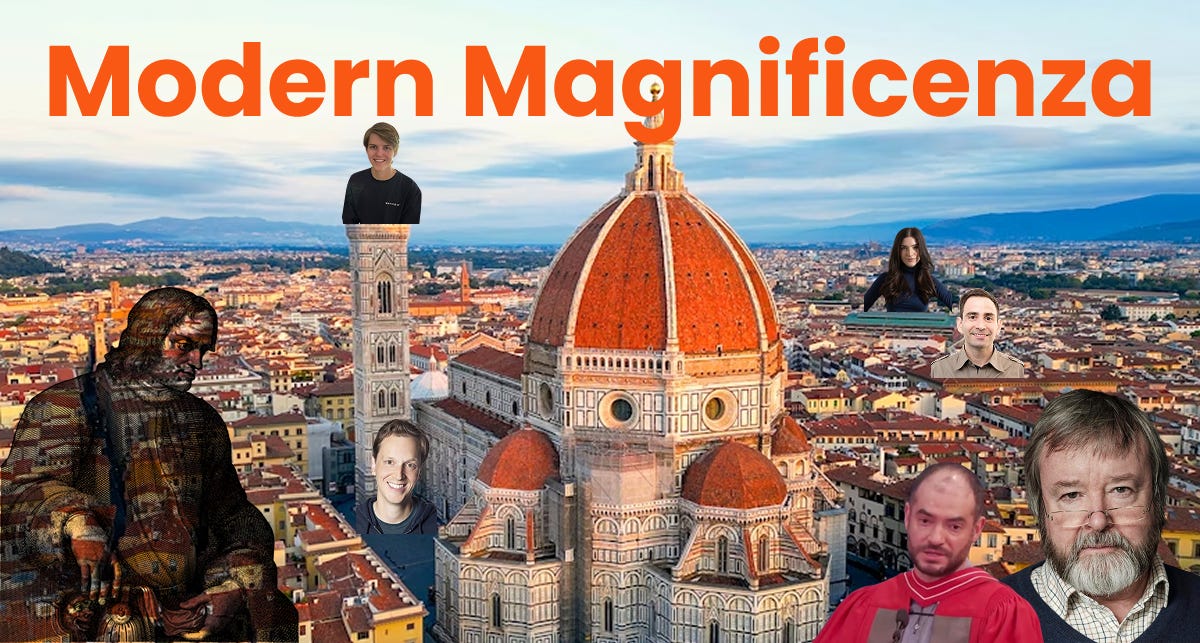


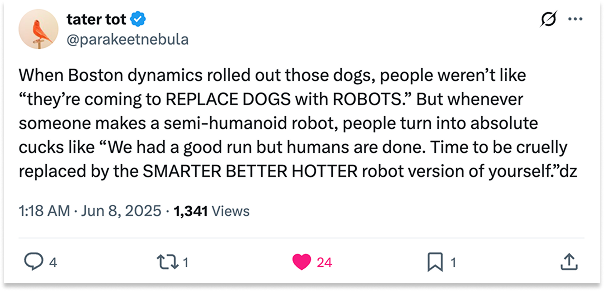

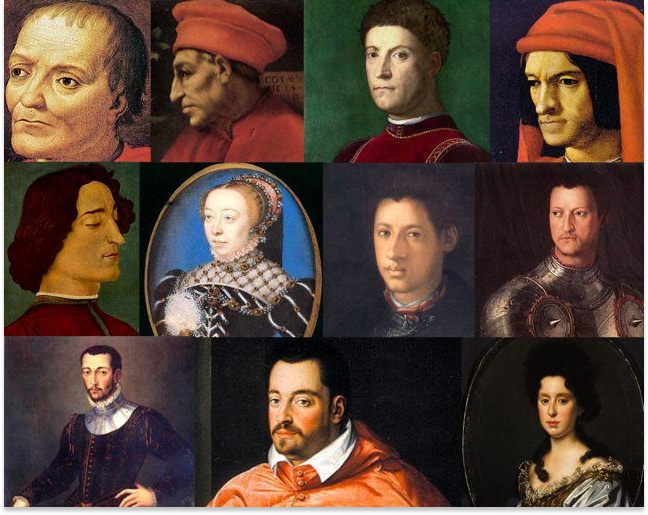
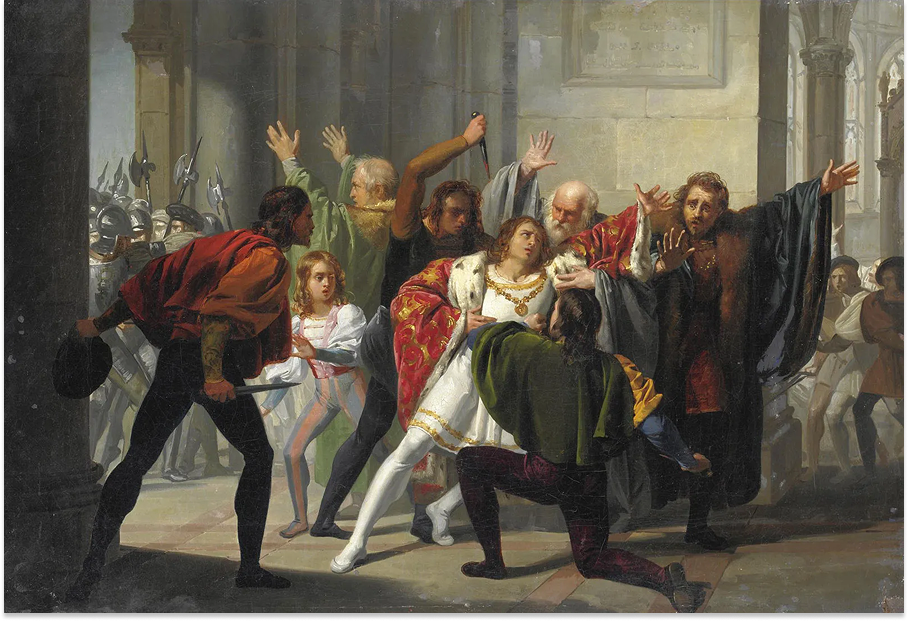
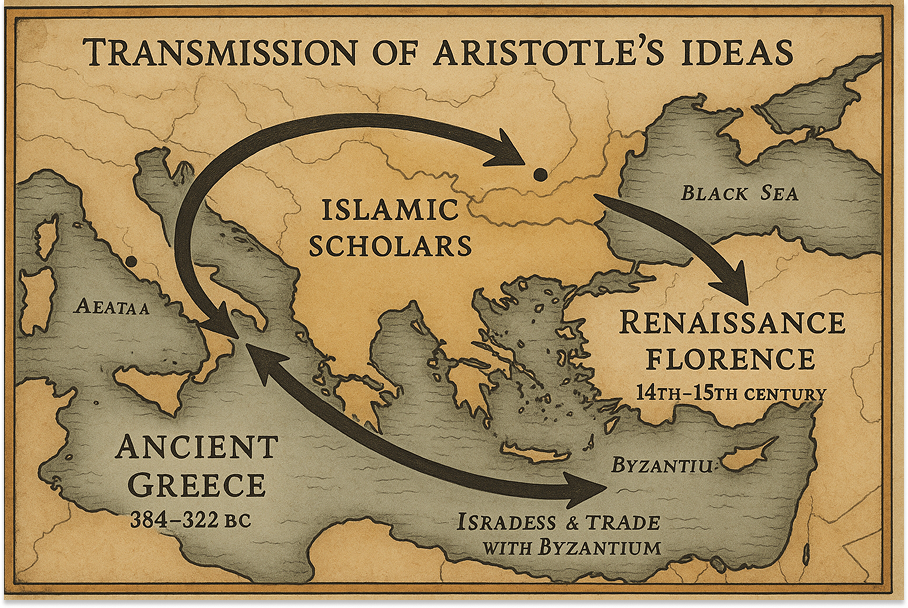
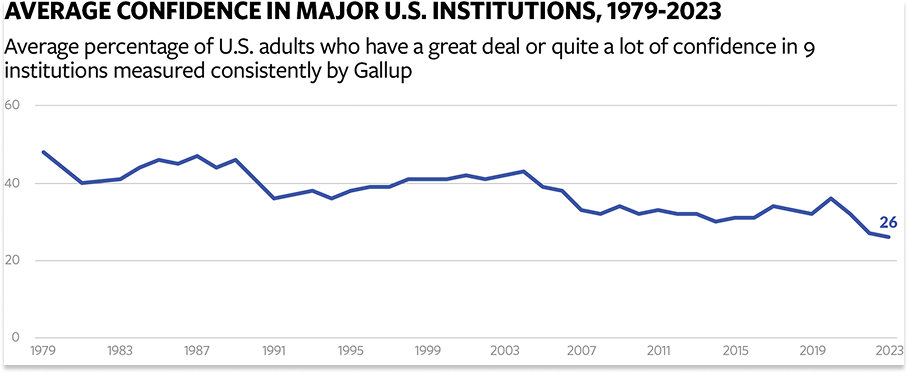

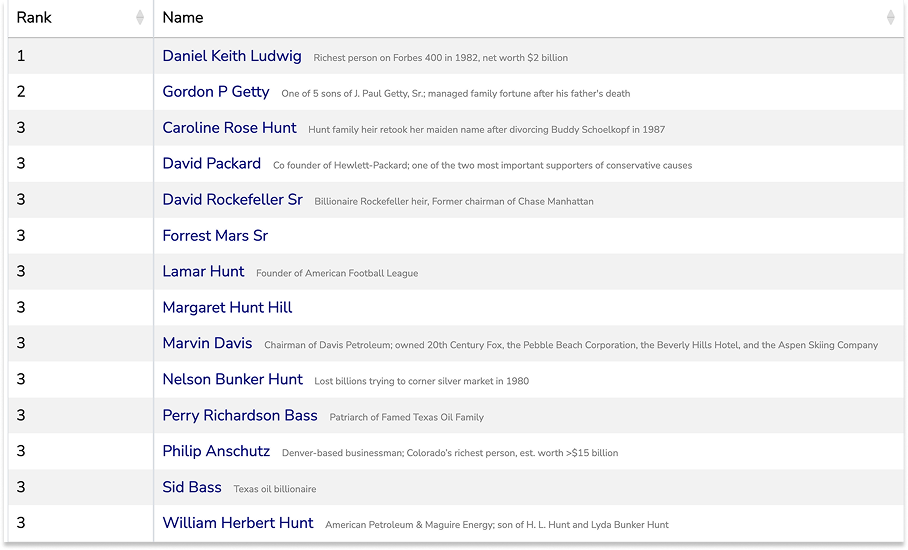
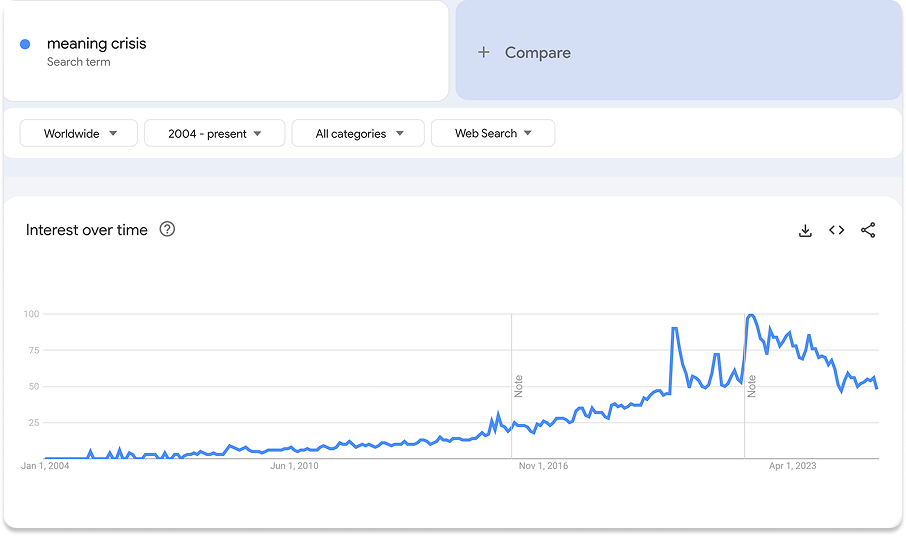
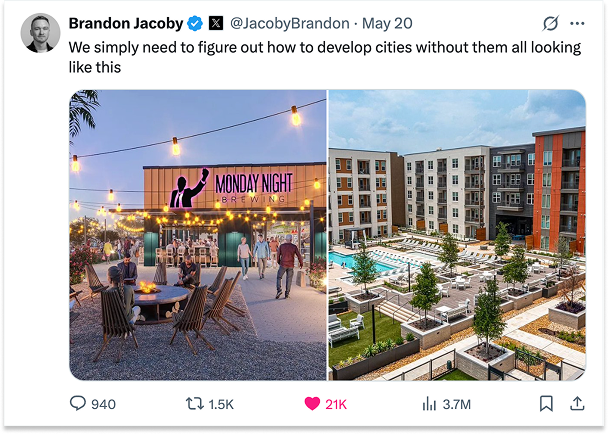

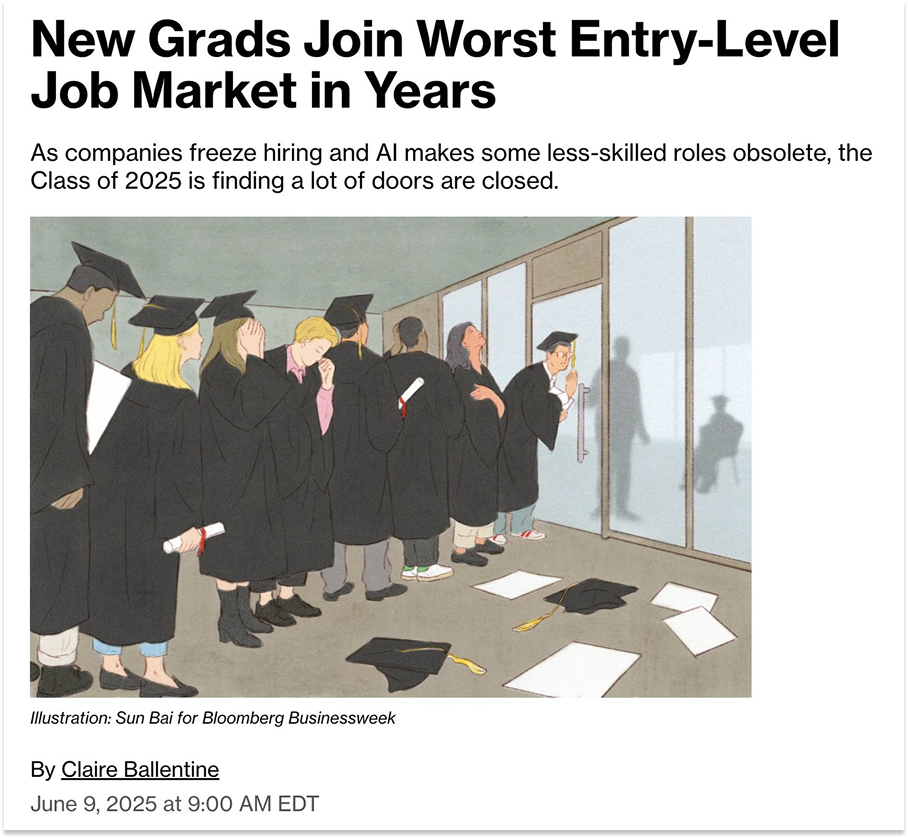
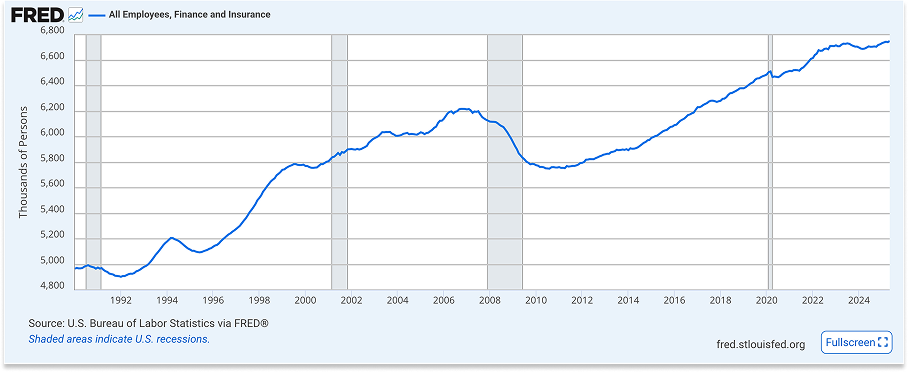
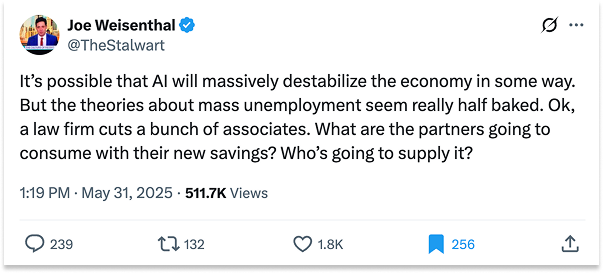



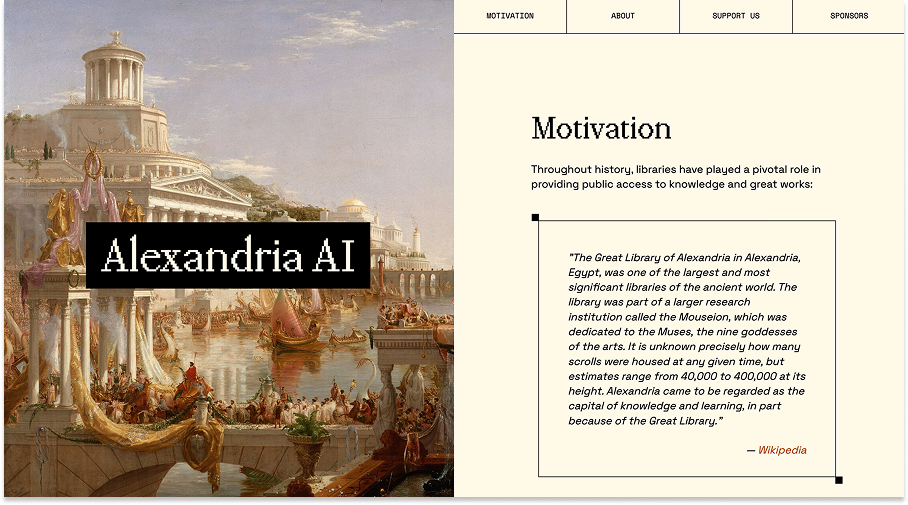

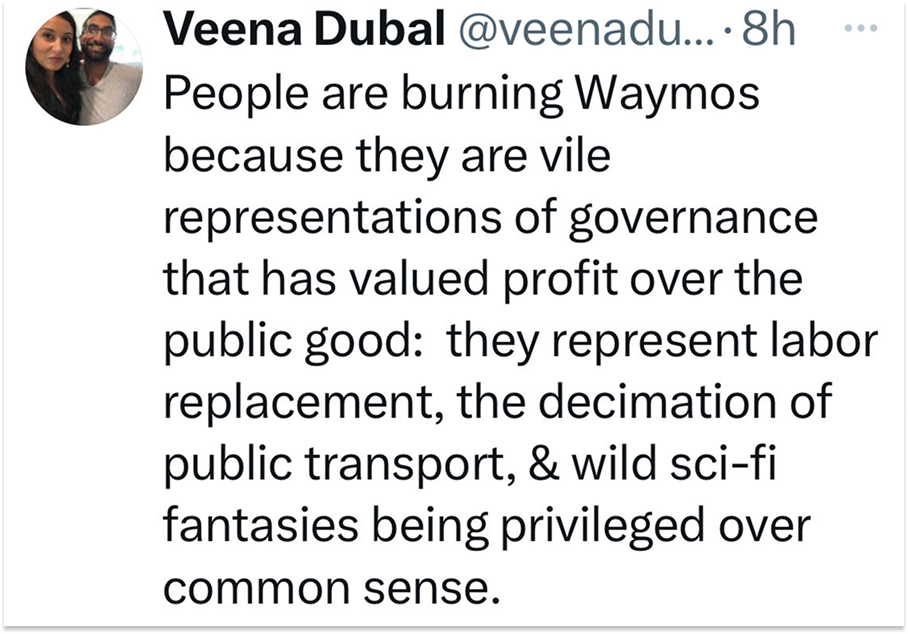
What a beautiful essay. I read The Master and the Emissary a few years back and I remember - now vaguely - the period during and after: you can fit so many phenomena out there in the world in the ways and, really, perceptions of how the hemispheres see the world. Studying psychology at that point, I saw how the left hemisphere imperative of "measure everything" permeated and completely took over a field that was never supposed to be quantified at all (or, to be more in line with the book's argument, the quantification should have been in the service of understanding the psyche but sadly, it became a thing unto itself). Your parallels with business, science, and effective altruism are also spot on. What I find the most challenging about it all is that once a critical mass of left-hemispheric dominance is achieved, it's very difficult to get out of the "event horizon" - the left hemisphere has, quite literally, built the structures and the systems each of us has to operate in. I'm curious whether your bet that AI will be the last nudge before the collective consciousness tilts back into some sort of equilibrium will pan out, or whether we're - by now - firmly set on tech-bros (utopian or dystopian, depending on how you see it) vision of the future.
I hope you are right 🤞. Cause right now, it’s Palio without the elegance.